By Anna Denman, senior History major, Fall 2022 Archives Intern
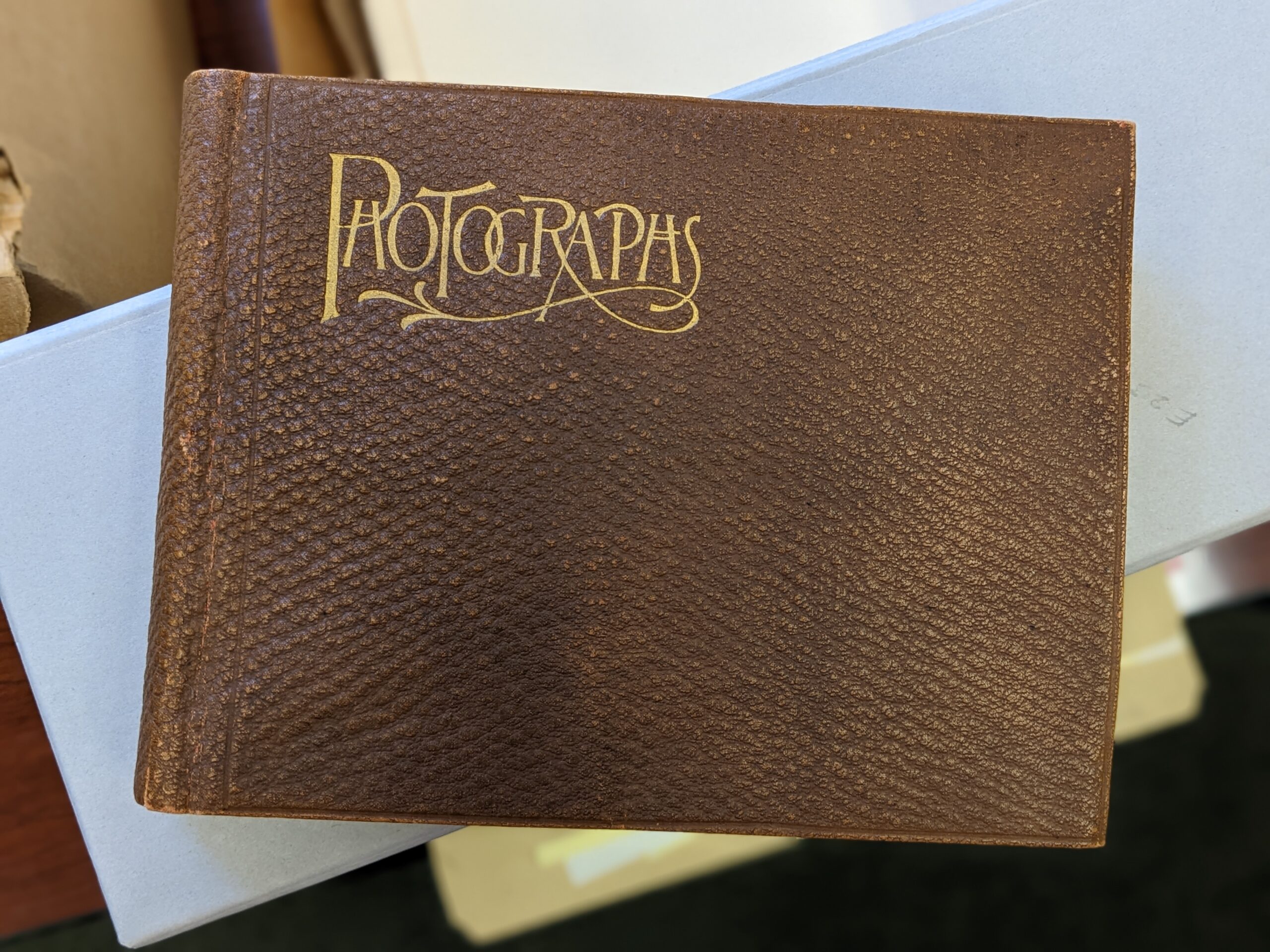
After the Mahn Center staff introduced me to the many internship project options available for the fall 2022 semester, I was immediately intrigued by the unidentified photo album. Who were the people smiling, laughing, and posing in these photographs that appeared to be at least one hundred years old? I am always surprised to see people look so casual and relaxed in photographs from that long ago. I expect stiff, barely smiling family portraits, rather than images of young friends dressed in costumes or children making funny faces for the camera. As is demonstrated by the pile of photos laying across the women in the photograph below, the people in these images took many photographs of family, friends, and the places they visited. Capturing moments and memories was important to them, as is made clear by the creation and preservation of this photo album.
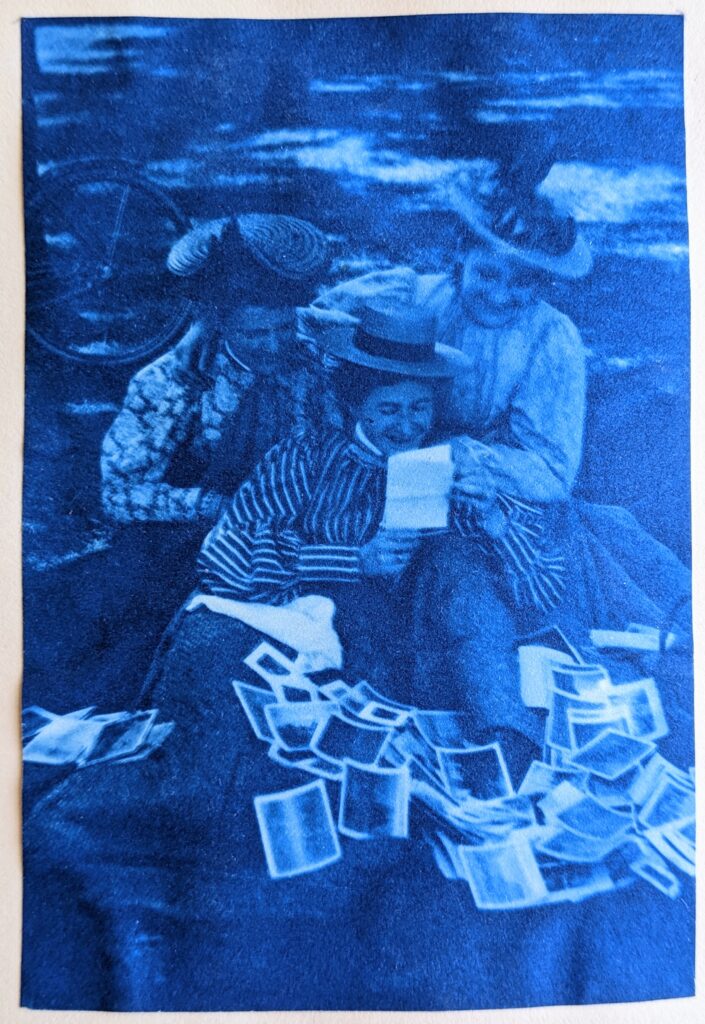
To begin investigating this mysterious photo album, I searched for clues to when and where the photographs were taken as well as who the subjects where. The clothing appeared to be a late Victorian style, and many of the homes looked Victorian as well. After researching ladies’ dress styles from the late nineteenth and early twentieth century, I deduced that these photographs must have been taken between 1885 and 1915.
I then found an image of a home office with a calendar hanging on the wall in the background, which appeared to be flipped to July of 1903. Other photos that appear later in the album can be seen placed on the desks in this photograph as well, indicating that those images were taken before that date. A more obvious clue to the period of these images was the label “Feb 1906, Indianola, Iowa,” on a loose photograph tucked into the back of the album.
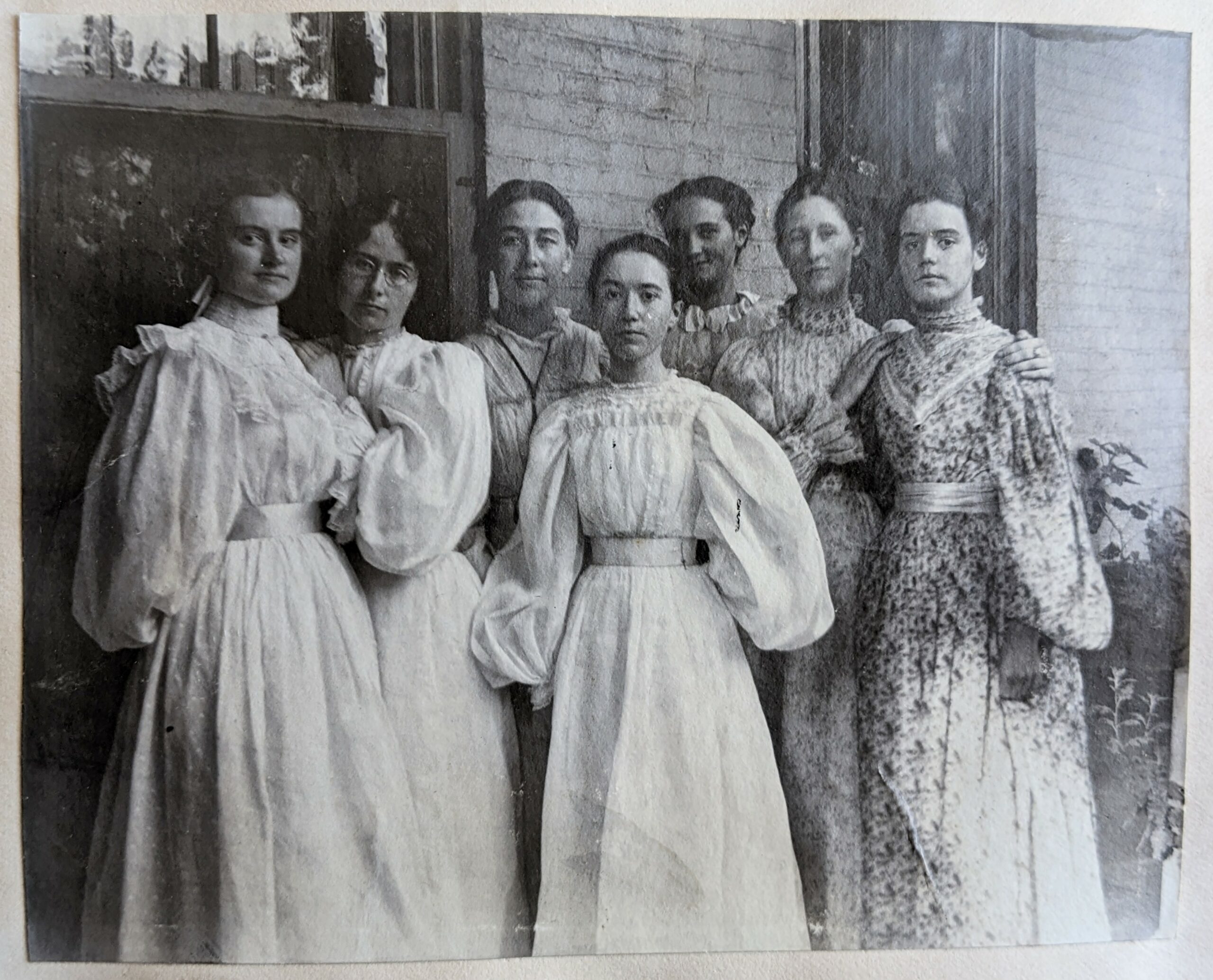
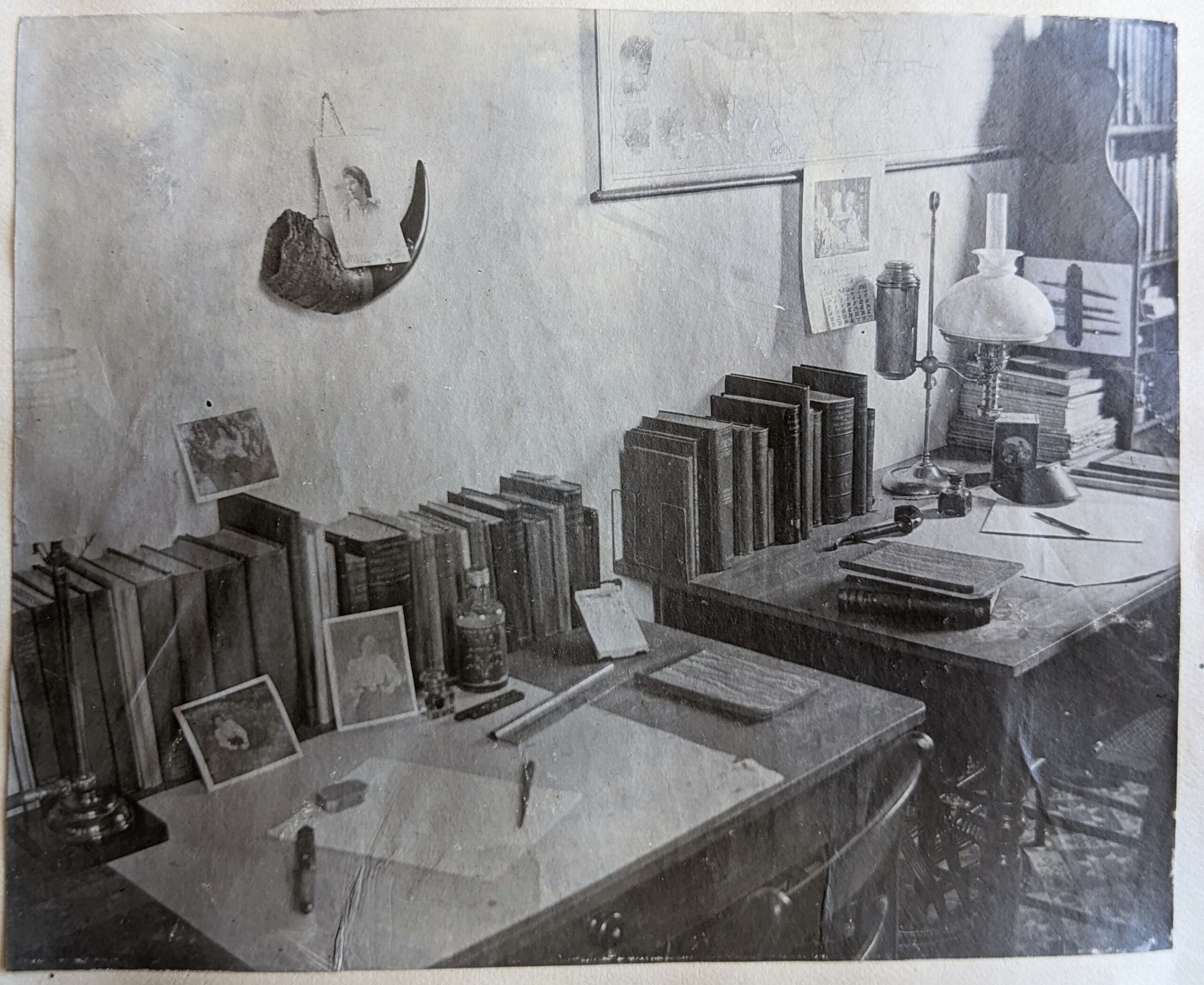
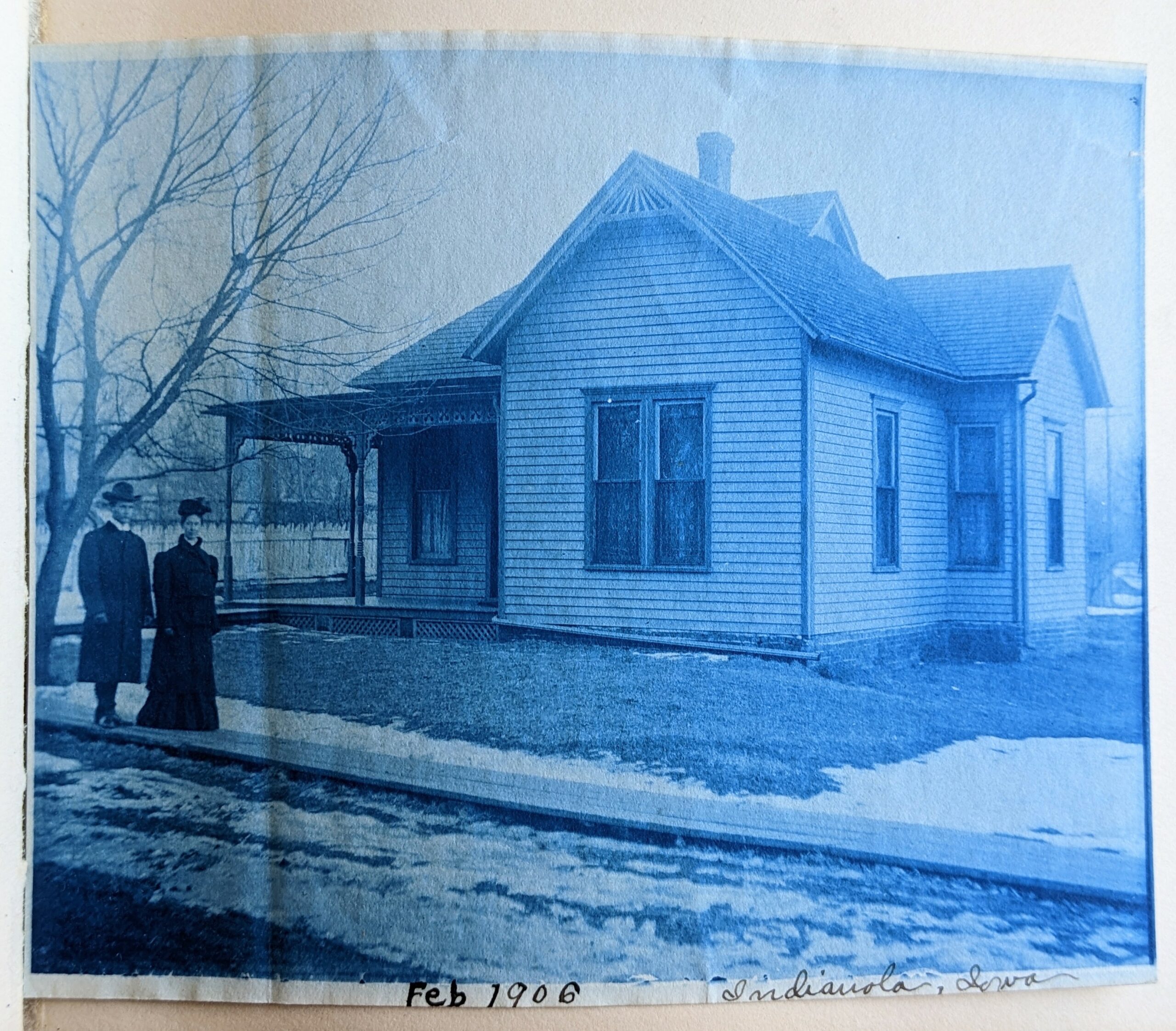
I then found a small card with the name “Mrs. Harry C. O’Bleness” written across it. Could this album have belonged to the O’Bleness family? All I knew about the O’Bleness family at this point was that the OhioHealth O’Bleness Hospital here in Athens, Ohio was named after the family or some member of the family. With a little research, I found an article in The Athens Messenger that details the history of O’Bleness Hospital and healthcare in Athens County. According to this article, the hospital was named after Charles O’Bleness, a successful banker and Athens local who donated one million of the 1.7 million dollars used to open the hospital.
The Mahn Center staff provided me with the O’Bleness Family Collection consisting of boxes of photographs, letters, wedding invitations, diplomas, pieces of hair, and more that were donated by Elizabeth O’Bleness, wife of Charles O’Bleness, in 1975. A combination of these documents and searches on genealogy platforms such as WikiTree revealed that Harry Clifford O’Bleness was the oldest brother of Charles Garnett O’Bleness, Ralph Alphonso O’Bleness, and Mary (Mame) Lulu Hutchinson O’Bleness. Images of the four O’Bleness children, their parents Henry G O’Bleness and Josephine M. (Shearer) O’Bleness, and other friends and family cover the pages of this photo album.
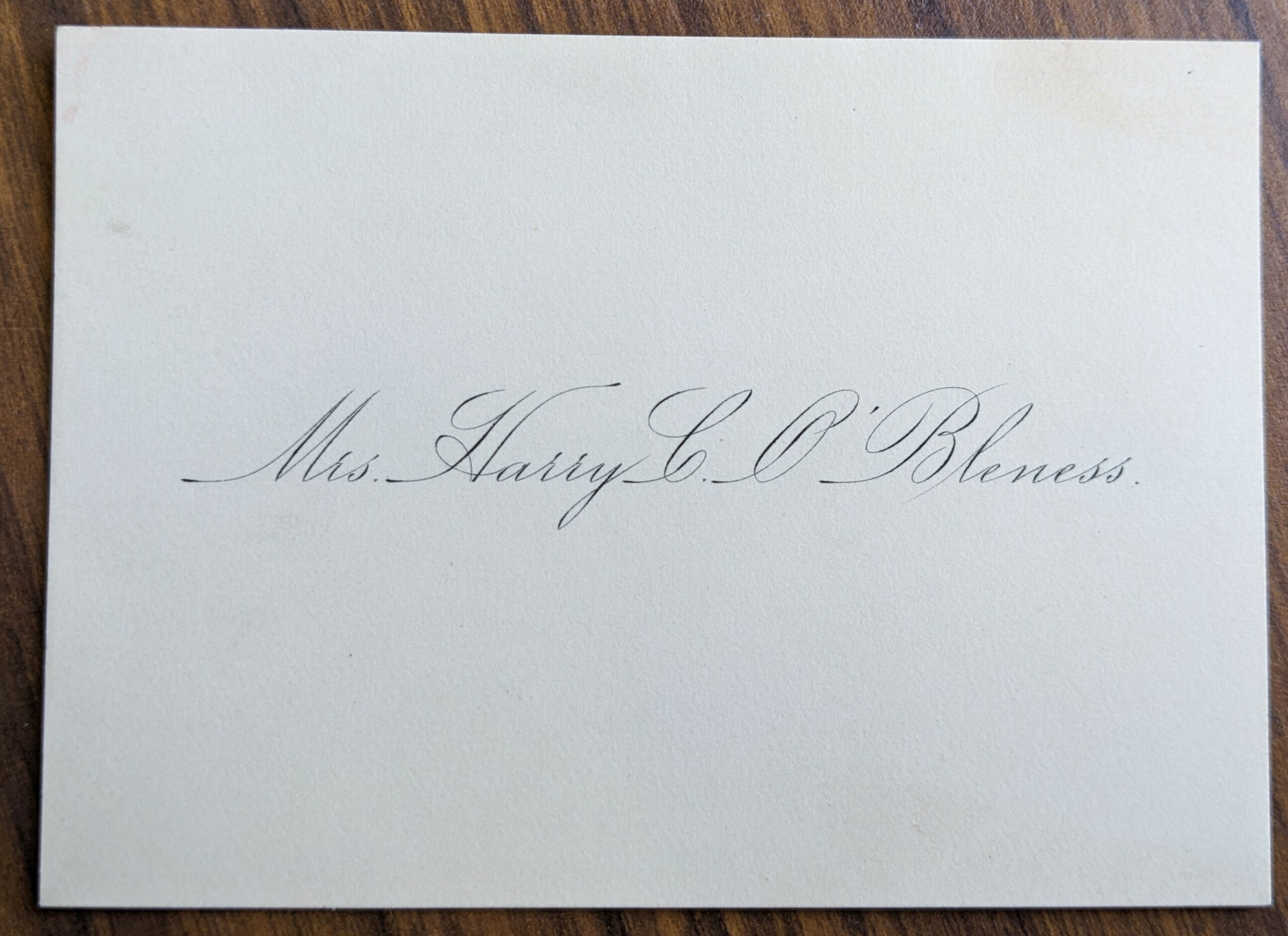
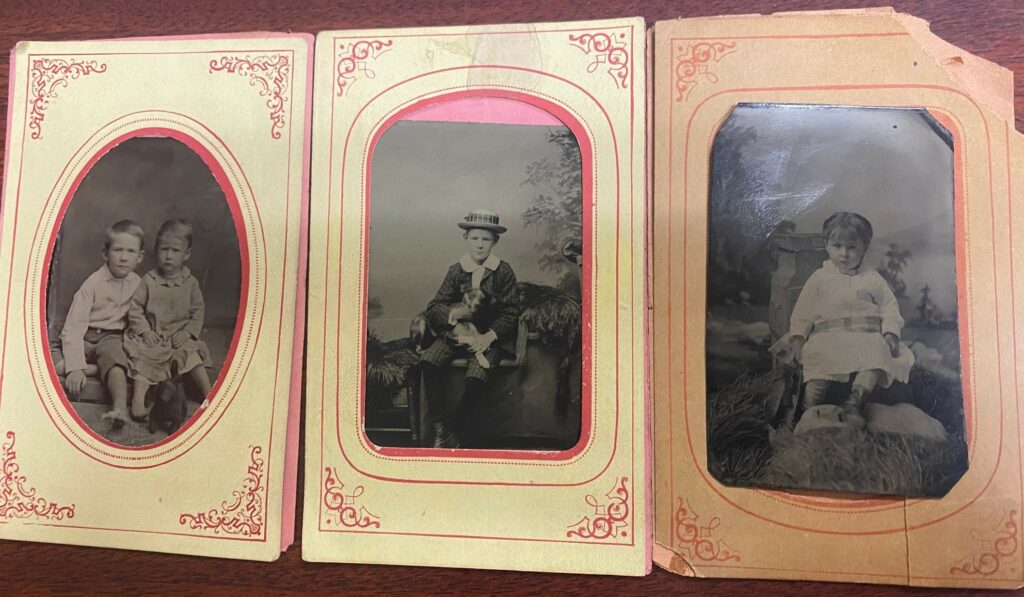
I quickly became intrigued by the youngest brother, Ralph O’Bleness, who seemed to disappear from the photo album and other O’Bleness family photographs at a young age. Using genealogy platforms, I discovered that Ralph died at the age of 19 in 1898 due to spinal injuries resulting from a collision with another player at football practice. A notice for his funeral services that I found in his records confirmed this story. Ralph was a member of one of Ohio University’s first ever football teams. A photograph of two of his teammates can be found in the back of the photo album. I found a picture of Ralph in his uniform in the O’Bleness family records that was clearly taken the same day as this photograph of his teammates. These photographs show the joyful moments that the members of the O’Bleness family shared.
The silly candid photographs of Charles, Ralph, and Mame playing dress-up provides a glimpse into their youth and the connections they shared with each other, but so many questions are left unanswered. How did Ralph’s passing affect the family? Why was Harry, the oldest sibling, absent from so many of the photographs of his siblings but still present in the rest of the photo album?
Despite all the questions I have already answered, each new image has me even more intrigued about this family and their stories.
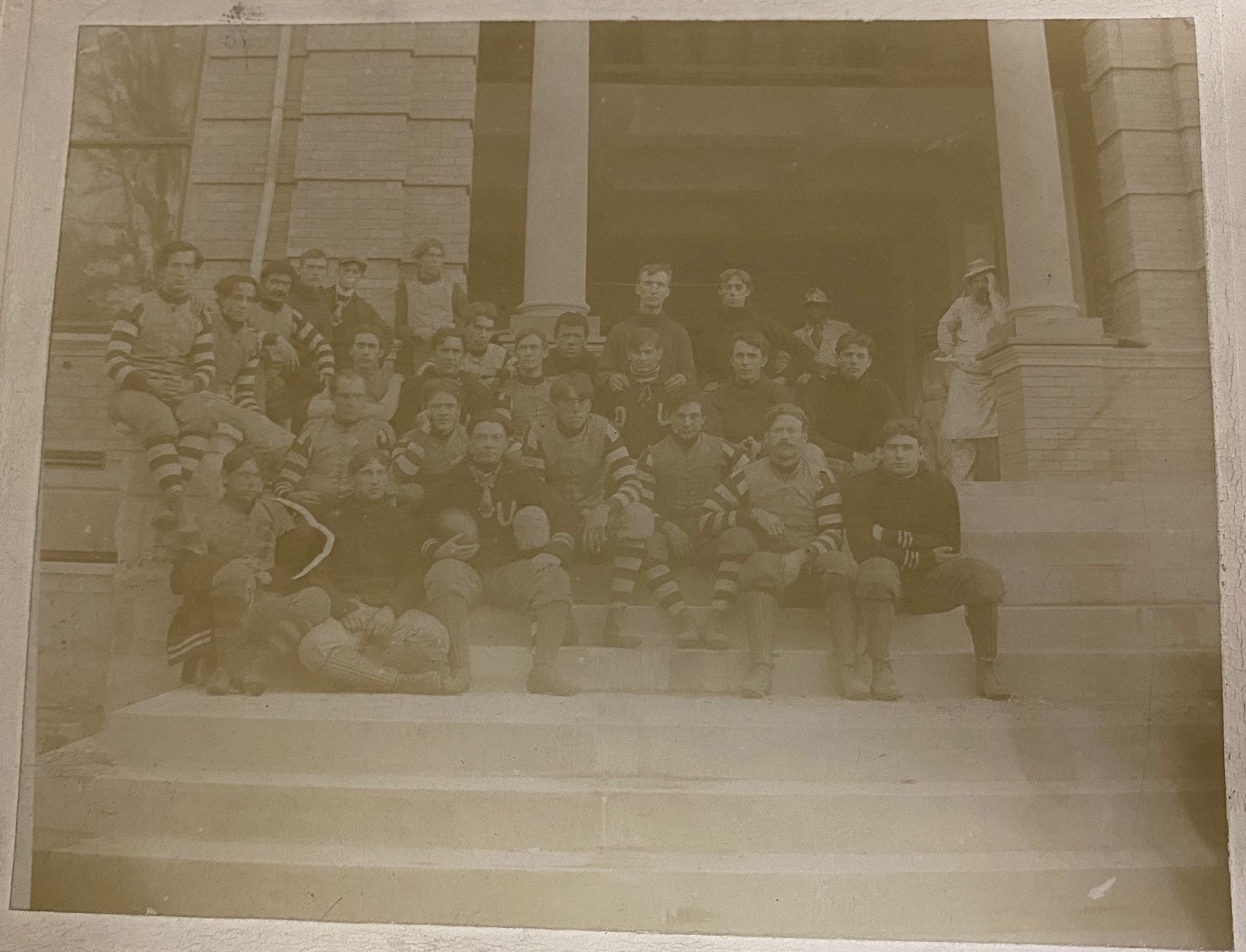
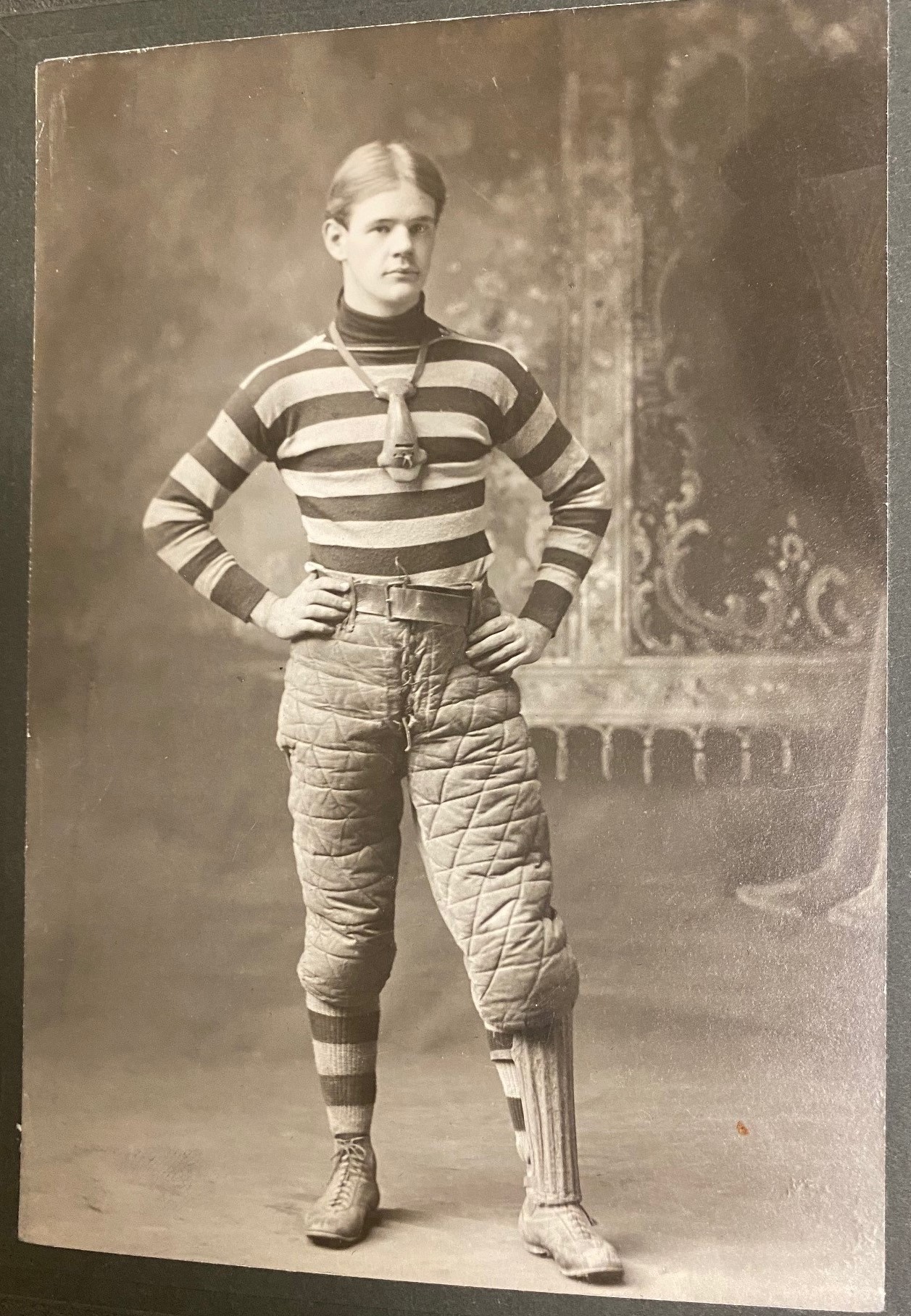

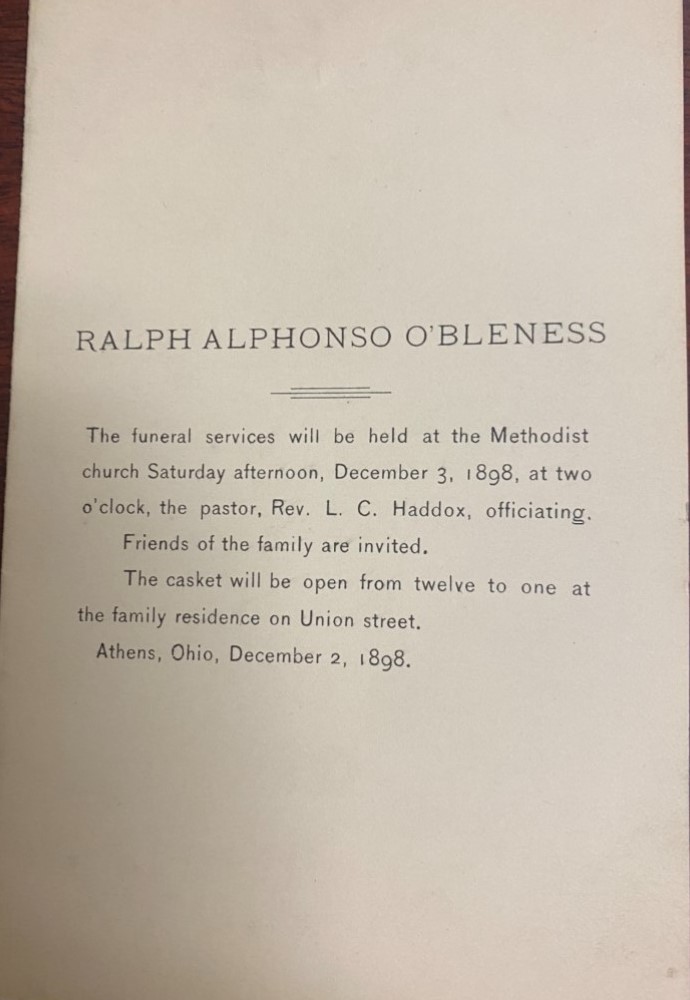
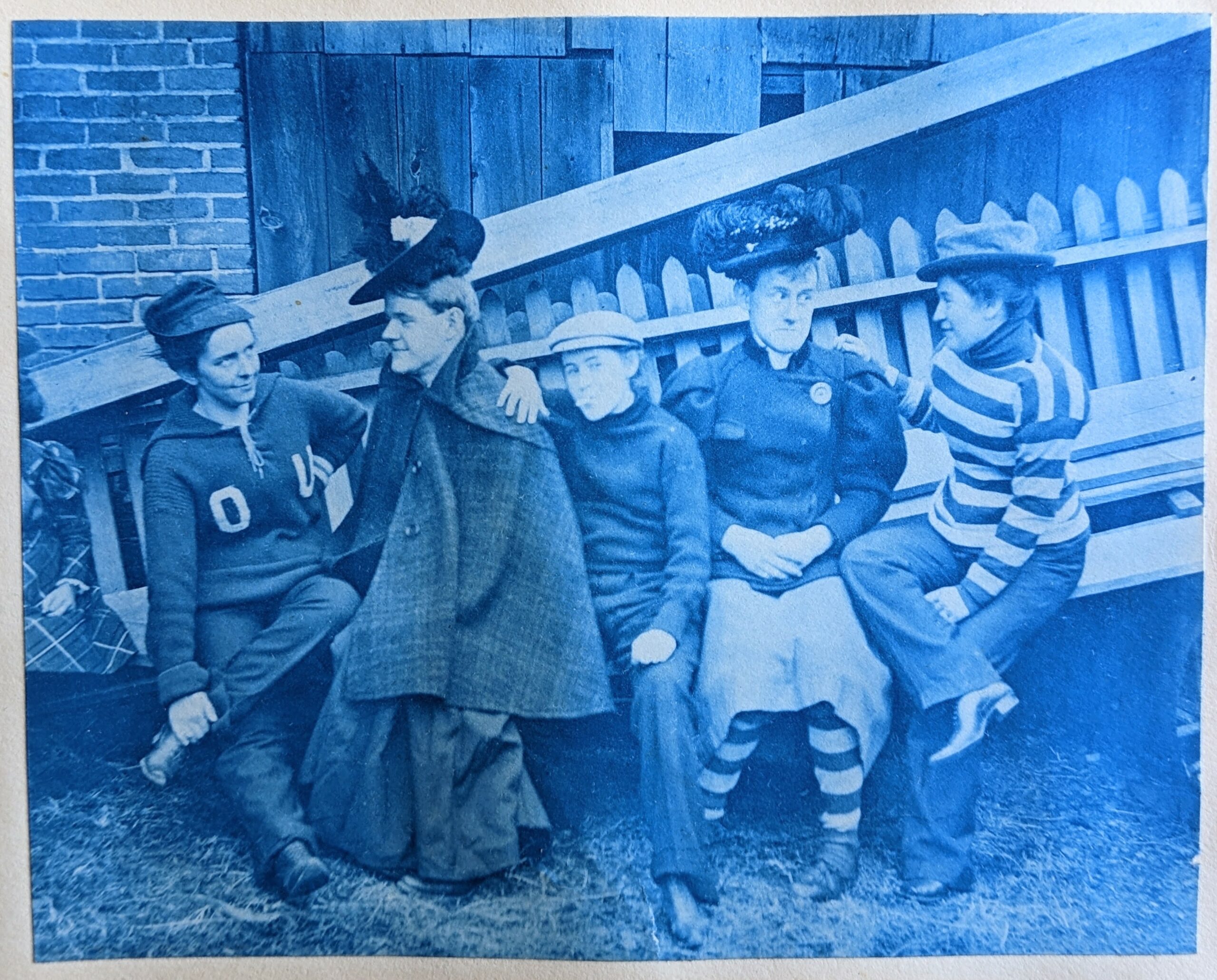
As I continued to match images from the O’Bleness family’s records to images in the photo album, I recognized the locations in some of the images that were taken here in Athens. For example, there are multiple images from the album that were taken of uptown Athens and the Soldiers and Sailors Monument that still sits on the College Green today.
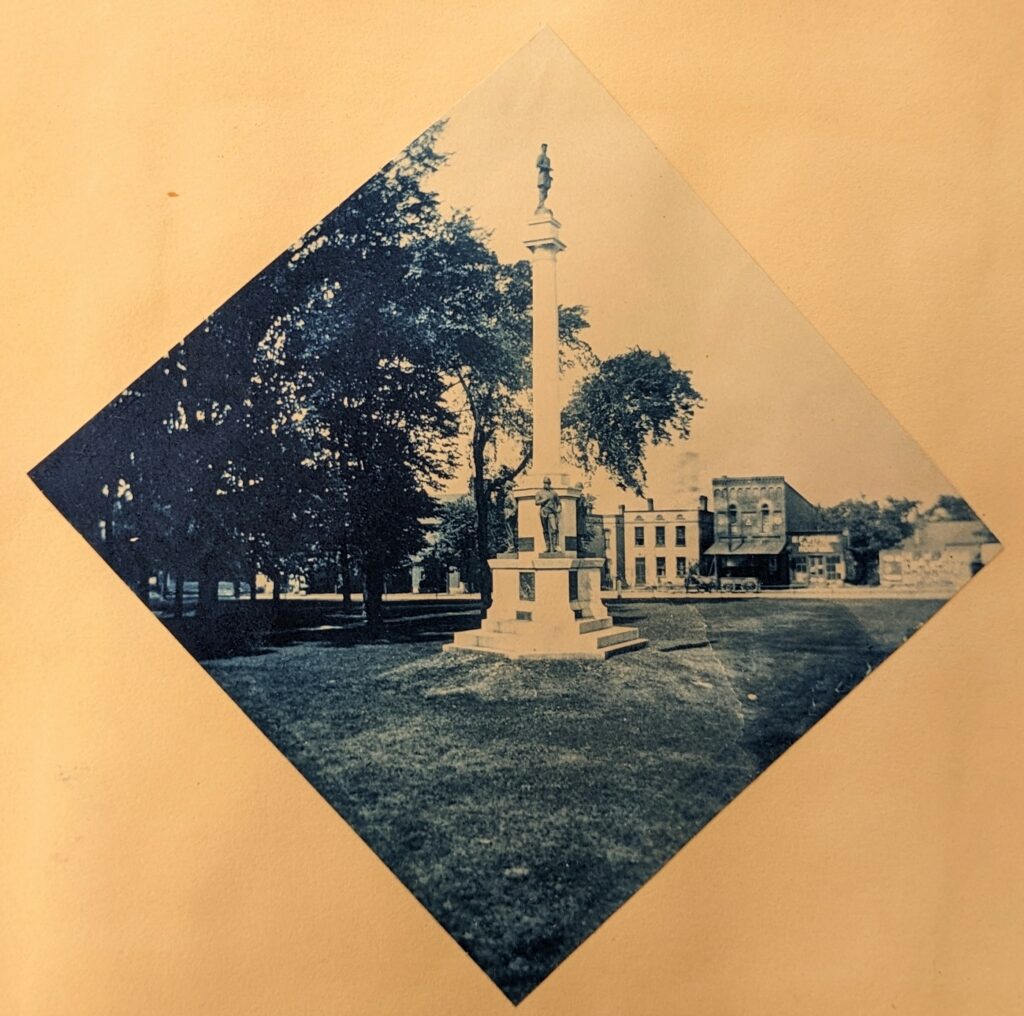
The O’Bleness family were already prominent members of the Athens community by the time this monument was erected in 1893. There are also multiple photographs of what would have then been called the “Athens Asylum for the Insane” or the “Athens State Hospital.” This complex that we now call “The Ridges” began operations as a mental hospital in 1874, which is what it would have been used as when the O’Bleness family captured these images.
I then came across an image in the album of Henry O’Bleness, Harry O’Bleness, and a man named Carl Fuller standing on the porch of the Athens Brick Co. office. A copy of this photograph in the O’Bleness family records allowed me to identify the men and location in the image.
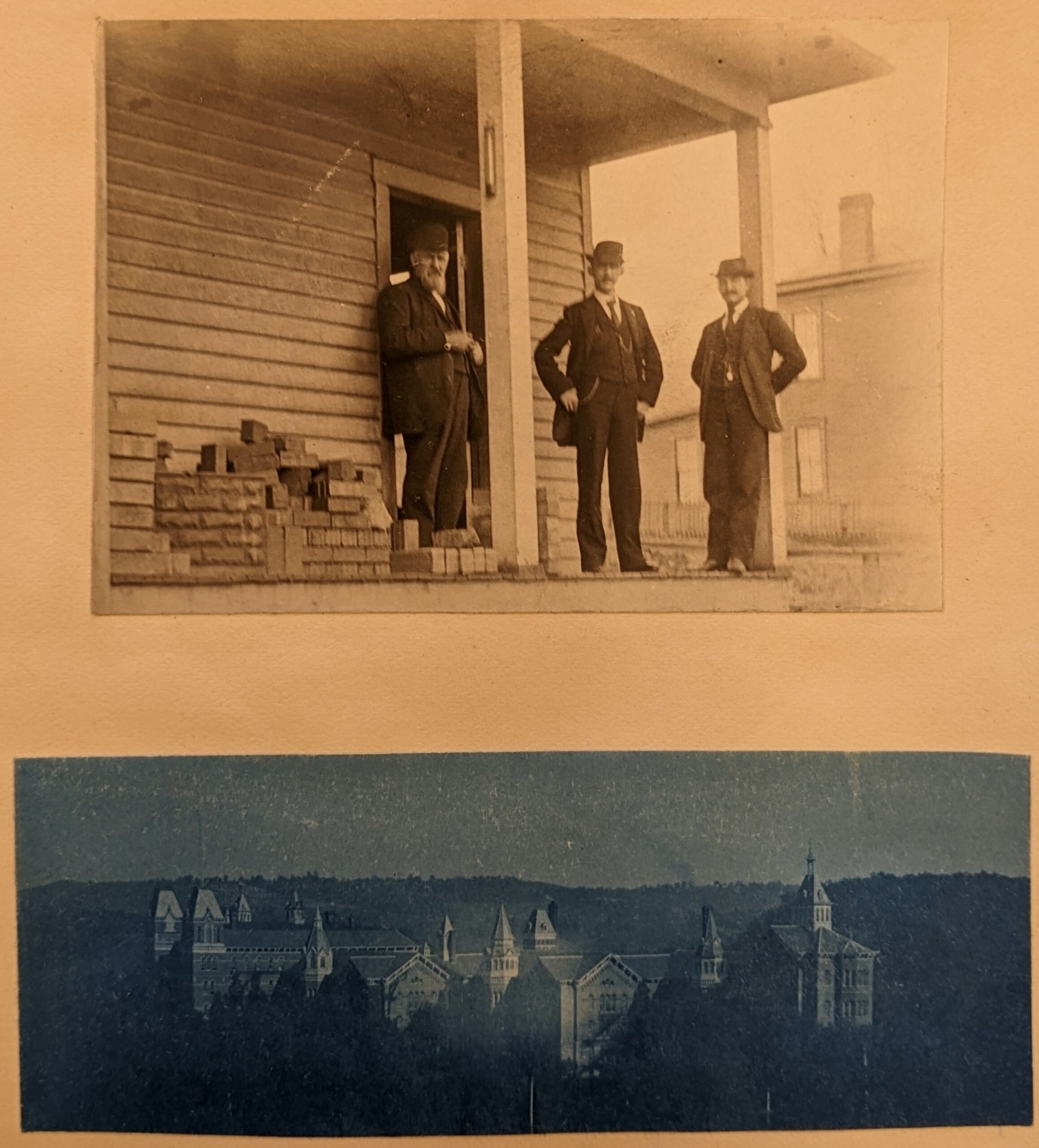
I later found a section of images in the album labeled “Signal Station, Camp Cuba de Libre, Jacksonville, Fla.” After some research, I determined that this was a military camp used in 1898 during the Spanish American War. I still do not know which members of the O’Bleness family took these photographs of the camp or why they were there. In the coming weeks, I hope to continue identifying more of the images from this photo album, as there are still many that have left me puzzled.
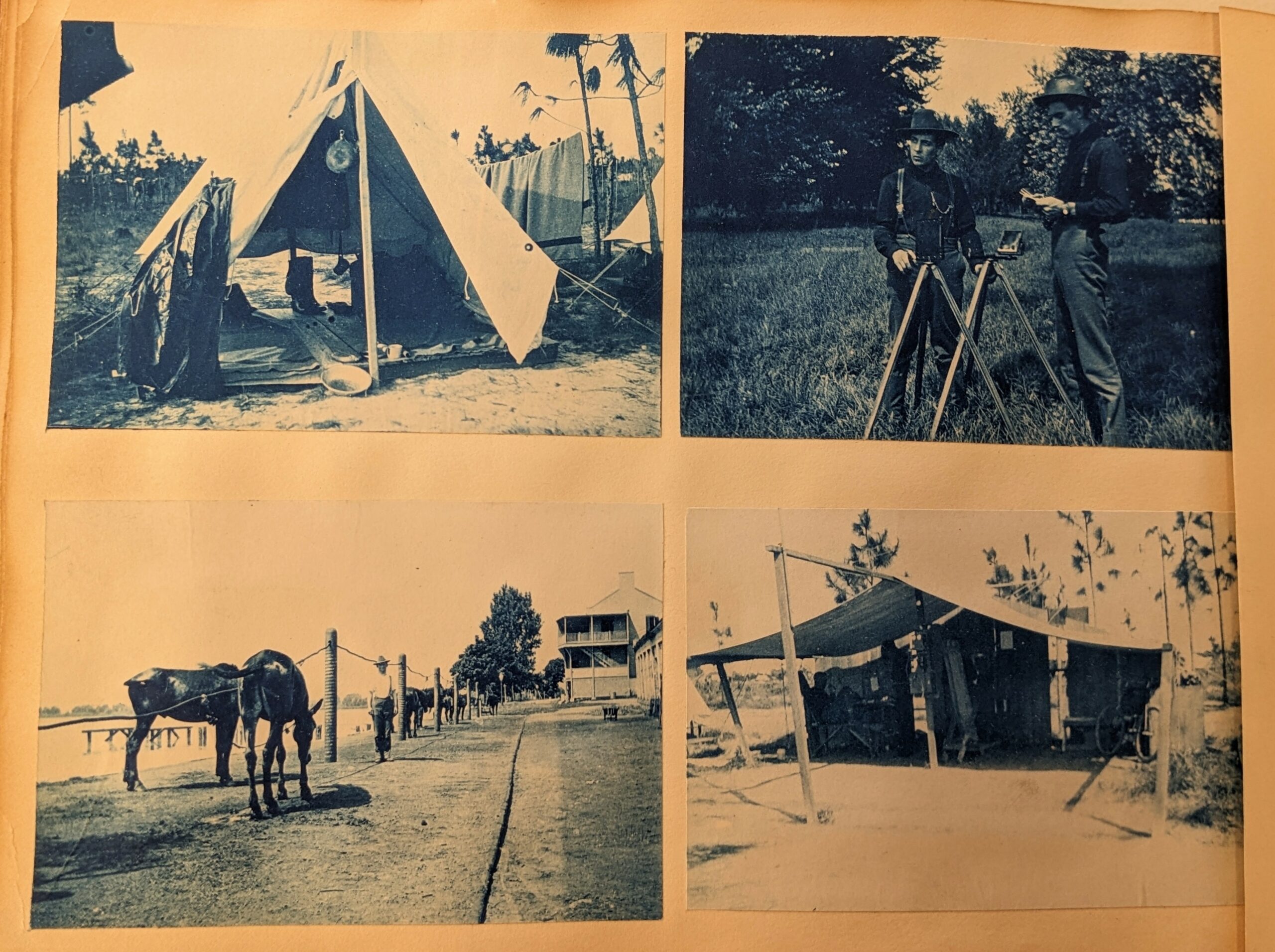
Works consulted:
Hulvalchick, Alex. “O’Bleness Celebrates Its Century-long History.” The Athens Messenger (Athens, OH), July 12, 2021. Accessed September 30, 2022.